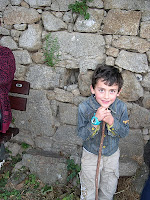I started reviewing books last year for Sacramento Book Review, and it has been one of the more pleasurable experiences in my life for several reasons. Three stand out.
For one thing, I get to discover some of the latest books being released. Don't all the writers, publishers, editors, teachers, etc. advise us to read as much as possible? This makes it possible to both read the latest books and feel virtuous as I indulge myself in what I've come to think of as book feasts.
More importantly, I have to analyze the books I read, and not merely read for entertainment. I have to think in terms of why a book does or does not satisfy, and in terms of plot, character, setting, and theme. I have think of plot structure in terms of tension, arc, and resolution, for scenes, chapters, and the whole book. I have to notice dialogue, imagery, and telling details and how they are rendered. In fact, reading a book with the idea of reviewing it is one of the best writing exercises I know. An added bonus is that the skills you sharpen in a review carry over to reading your own work. Among other things, reviewing books teaches you to read like an editor.
Which brings me to my third reason: Reviewing books has given me real perspective on decisions of editors and agents. As a reviewer, I've read books that are "good", "very good", "wonderful", and "outstanding". I've read books that make me eagerly await the next one by the same author. But, I've also read a few duds. There is good reason reputable agents and editors don't take on submissions riddled with poor grammar, poor spelling, poor punctuation, a rushed ending, etc. And, if you want the best writing future for yourself, you won't want to settle for those who will. It goes beyond mere grammar rules. Writing well takes patience. It's revising and polishing that brings about the kind of story their guidelines ask you to follow.
In my own case, sometimes I get "antsy" and would just like to be done with a WIP. But then I put it away, and when I take it up again, I see where it needs more attention, and I realize: "I don't want to send it out this way." (And I don't want to see it published this way either.) More and more, when revising after critique buddies have given feedback, I find myself asking, "How would an agent see this?" "How would an editor see this?" After all, I won't be at their side, explaining what I'm trying to convey here. And they won't have been through this piece with me three or four times and know where I'm going with it. They have to get it from the first read.
How about you? Have you sometimes been too eager to be published? Are you ever tempted to send work in before it's ready? Do you ever have an "aha" moment when you see your work through an editor's eyes? Please share your thoughts.

